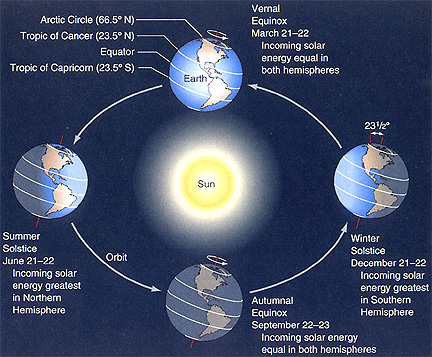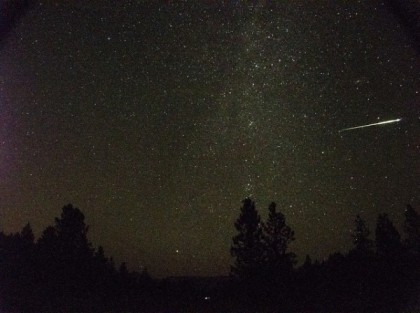 December Solstice in is on Saturday, December 21, 2013 at 11:11 AM CST
December Solstice in is on Saturday, December 21, 2013 at 11:11 AM CST
The December solstice occurs when the sun reaches its most southerly declination of -23.5 degrees. In other words, it is when the North Pole is tilted 23.5 degrees away from the sun. Depending on the Gregorian calendar, the December solstice occurs annually on a day between December 20 and December 23. On this date, all places above a latitude of 66.5 degrees north (Arctic Polar Circle) are now in darkness, while locations below a latitude of 66.5 degrees south (Antarctic Polar Circle) receive 24 hours of daylight.
Ursid Shower Peaks.
In your local pre-dawn hours of Sunday, December 22, a minor meteor shower peaks in the northern skies.
As with all meteor showers, the Ursids are named after the constellation they appear to radiate out from in the sky, in this case Ursa Minor, the little bear. Meteors appear to shoot out from a region of sky just above the bowl of the Little Dipper.
 While the Ursids only produce on average about 10 to 15 shooting stars per hour at rare times there are bursts of 30 or more per hour. The parent comet is 8P/Tuttle and Earth plows through the debris shed from this icy visitor between December 17 and 23.
While the Ursids only produce on average about 10 to 15 shooting stars per hour at rare times there are bursts of 30 or more per hour. The parent comet is 8P/Tuttle and Earth plows through the debris shed from this icy visitor between December 17 and 23.
This year meteor watchers will have to contend with a waning gibbous moon which rises the night before at around 9 pm. So expect to see more modest numbers than usual, somewhere around 5 to 10 per hour.
The best time to view the Ursids between midnight (0:00) and before dusk.
